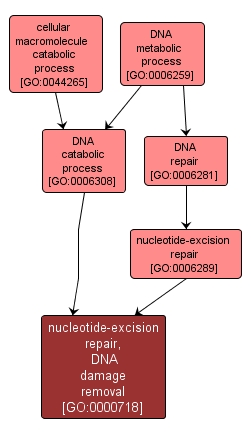GO TERM SUMMARY
|
| Name: |
nucleotide-excision repair, DNA damage removal |
| Acc: |
GO:0000718 |
| Aspect: |
Biological Process |
| Desc: |
The removal of the oligonucleotide that contains the DNA damage. The oligonucleotide is formed by dual incisions that flank the site of DNA damage. |
|

|
INTERACTIVE GO GRAPH
|














